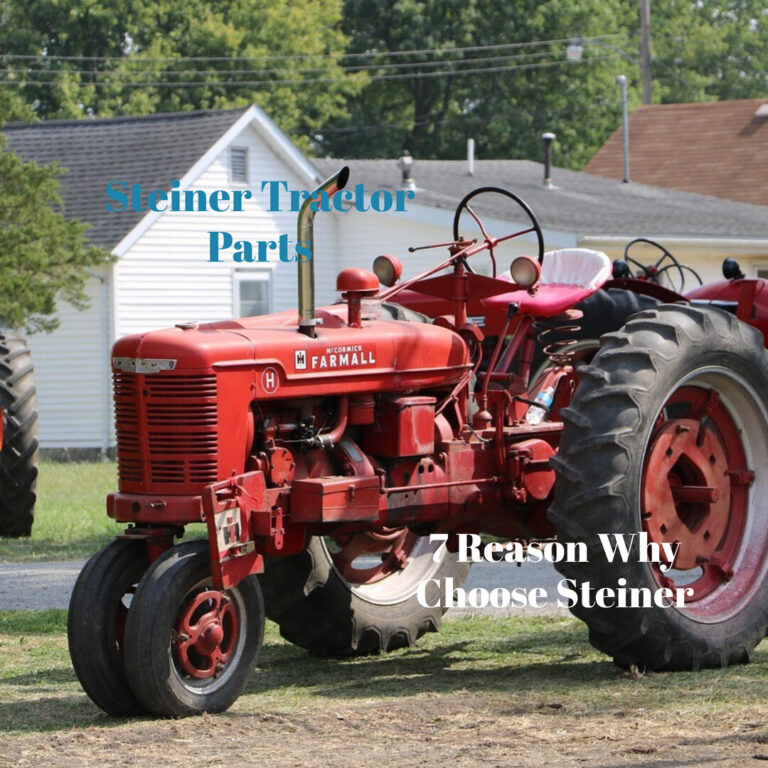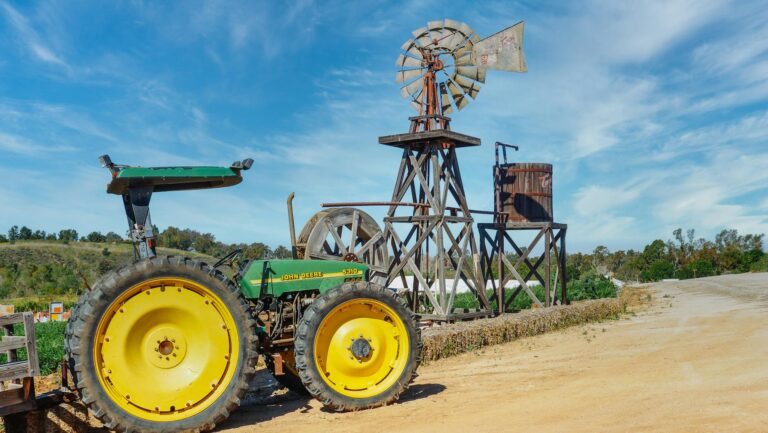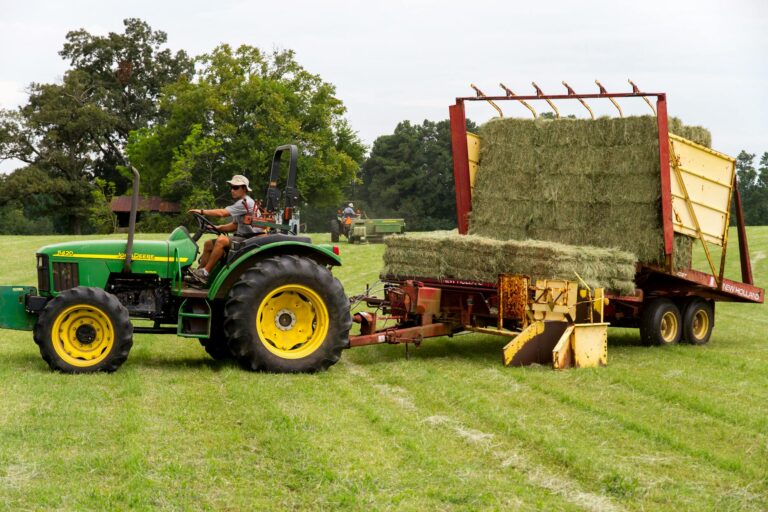When discussing vintage tractors that revolutionized farming in America, the Farmall H holds a special place. Known for its durability, versatility, and simple mechanical design, the Farmall H became a favorite among farmers across the country. If you’re looking for Farmall H tractor data including its overview, engine, transmission, and dimensions, this detailed article will walk you through everything you need to know.
Whether you’re restoring one, considering a purchase, or simply want to understand the historical impact of this machine, this guide has all the facts and figures.
Overview of the Farmall H Tractor
The Farmall H was manufactured by International Harvester (IH) from 1939 to 1953 and was one of the most popular row-crop tractors of its time. As a part of IH’s Farmall letter series, the H was the mid-size model, designed for general farm work like plowing, cultivating, and light fieldwork.
Key Highlights:
- Production Years: 1939–1953
- Manufacturer: International Harvester
- Total Units Built: Over 390,000 units
- Original Price: Around $1,500 in the 1940s
- Fuel Options: Gasoline, distillate, and kerosene
- Designed For: Row-crop farming, general utility work
The Farmall H was particularly popular due to its adaptability. It could handle a wide variety of implements and was well-suited for medium-sized farms. Its iconic red color and tall rear wheels made it instantly recognizable in fields across North America.
Farmall H Engine Specifications
The engine is at the heart of every great tractor, and the Farmall H was no exception. It was equipped with a reliable four-cylinder engine that provided more than enough power for the tasks it was designed to handle.
Engine Data:
| Specification | Details |
|---|---|
| Engine Type | 4-cylinder inline |
| Fuel Type | Gasoline, distillate, or kerosene |
| Cooling System | Liquid-cooled |
| Bore x Stroke | 3.375″ x 4.25″ (86mm x 108mm) |
| Displacement | 152 cubic inches (2.5 L) |
| Compression Ratio | 5.9:1 (gasoline) |
| Rated RPM | 1650 rpm |
| Gross Horsepower | 26.5 hp (approx.) |
| Drawbar Horsepower | 24 hp |
| PTO Horsepower | 26 hp |
| Fuel Capacity | 21 gallons (79.5 L) |
Engine Features:
- Versatile Fuel Options: The ability to run on gasoline, distillate, or kerosene made the Farmall H adaptable to different farm needs and fuel availability.
- Efficient Cooling System: The water-cooled system helped prevent overheating during long hours in the field.
- Durability: Many Farmall H engines are still running today with minimal restoration.
The engine provided plenty of torque, making it capable of running plows, discs, cultivators, and other mid-sized implements with ease.
Farmall H Transmission Details
Another major feature of the Farmall H tractor data is its transmission system. Known for its simplicity and reliability, the manual gearbox allowed for excellent control during all types of field operations.
Transmission Data:Engine Features:
- Versatile Fuel Options: The ability to run on gasoline, distillate, or kerosene made the Farmall H adaptable to different farm needs and fuel availability.
- Efficient Cooling System: The water-cooled system helped prevent overheating during long hours in the field.
- Durability: Many Farmall H engines are still running today with minimal restoration.
The engine provided plenty of torque, making it capable of running plows, discs, cultivators, and other mid-sized implements with ease.
Farmall H Transmission Details
Another major feature of the Farmall H tractor data is its transmission system. Known for its simplicity and reliability, the manual gearbox allowed for excellent control during all types of field operations.
Transmission Data:
| Specification | Details |
|---|---|
| Type | Sliding gear manual transmission |
| Gears | 5 forward / 1 reverse |
| Clutch | Dry disc-type |
| Max Forward Speed | 16.3 mph (26.2 km/h) |
| Max Reverse Speed | 3.4 mph (5.5 km/h) |
| Final Drive | Bull gear and pinion |
Transmission Features:
- Simple Design: Few moving parts made the transmission durable and easy to maintain.
- Good Gear Ratio Range: Provided enough speed variability for plowing, cultivating, and transport.
- Reliable Clutch: Easy to operate and responsive under load.
Many Farmall H users appreciated the smooth shifting and ability to fine-tune speeds to match specific agricultural tasks.
Farmall H Dimensions and Weight
Despite being a mid-sized tractor, the Farmall H was known for its relatively lightweight frame and tall stature, making it ideal for row-crop applications.
Dimension Data:
| Specification | Details |
|---|---|
| Length | 125 inches (317.5 cm) |
| Width | 75 inches (190.5 cm) |
| Height (Steering Wheel) | 83.4 inches (211.6 cm) |
| Ground Clearance | 20 inches (50.8 cm) |
| Wheelbase | 88 inches (223.5 cm) |
| Weight (Shipping) | 3,920 lbs (1,778 kg) |
| Weight (Operating) | 4,250 lbs (1,928 kg) |
| Weight (Ballasted) | Up to 6,000 lbs (2,721 kg) |
| Front Tires | 5.50-16 |
| Rear Tires | 11.25-38 or similar |
Dimensional Features:
- Row-Crop Friendly: High clearance and adjustable rear wheels made it ideal for row-cropping.
- Lightweight Yet Stable: Easier to transport but still heavy enough for strong traction.
- Adaptable Wheel Tracks: Rear wheels were adjustable to match different row widths.
The Farmall H’s balanced size made it perfect for farms of 40 to 160 acres, which were typical in the mid-20th century.
Implement Compatibility and Attachments
The Farmall H was highly adaptable and could work with a wide array of farm implements including:
- Plows (1–2 bottom)
- Cultivators
- Disc harrows
- Mowers
- Corn pickers
- Planters
- PTO-driven equipment
PTO & Hydraulic System:
- PTO Type: Transmission-driven (non-independent)
- PTO Speed: 540 RPM
- Hydraulics: Optional Lift-All system
- Hitch: No 3-point hitch from factory, but aftermarket kits are available
The Lift-All hydraulic system, which was an option, allowed for lifting implements mounted under or behind the tractor—especially cultivators and plows.
Farmall H Restoration and Collector Interest
Due to its massive production and availability of parts, the Farmall H is a favorite for restorers and tractor collectors.
Restoration Advantages:
- Wide availability of used parts
- Simple mechanical layout
- Huge community support and documentation
- High resale value when fully restored
Many Farmall H tractors have been restored to showroom condition and are displayed in tractor shows or used in vintage tractor pulls.
Common Issues with the Farmall H
While generally reliable, some common issues have been noted by owners over the years:
- Worn clutch and brake linings
- Leaky rear axle seals
- Steering system wear
- Carburetor rebuilds needed over time
However, these issues are relatively easy to address thanks to the abundance of aftermarket parts and documentation.
Why the Farmall H Still Matters Today
Even though production ended in the early 1950s, the Farmall H remains a beloved icon of American agriculture. It’s not just about nostalgia—many of these machines are still in active use on small farms and homesteads.
Reasons to Choose a Farmall H Today:
- Durable and simple design
- Easy to repair and maintain
- Strong community of owners and enthusiasts
- Cost-effective for small-scale use
- Classic tractor aesthetics and historical value
Whether you’re running a small farm, entering the tractor restoration hobby, or simply appreciate vintage machinery, the Farmall H delivers enduring value.
Conclusion
The Farmall H tractor data proves just how influential this machine was in transforming mid-century American agriculture. With over 390,000 units built, the Farmall H became a symbol of innovation, efficiency, and resilience.
Its reliable engine, manual transmission, versatile dimensions, and adaptability to a wide range of implements made it a go-to tractor for generations of farmers. Today, the Farmall H continues to find new life through restoration projects and practical use on small farms.
If you’re looking for a classic, time-tested tractor, the Farmall H remains a fantastic choice—both for its function and its form.



